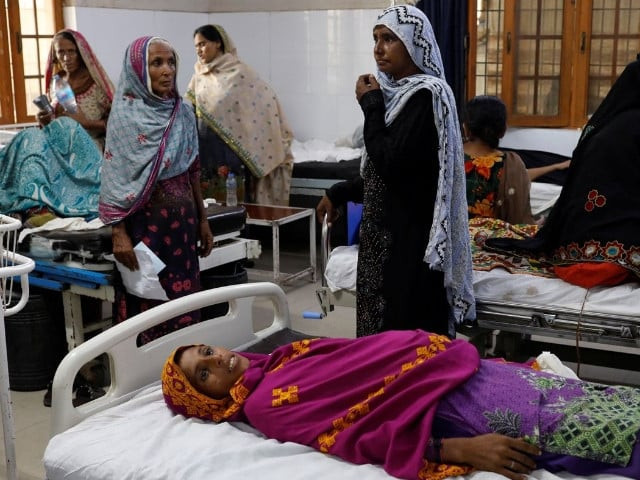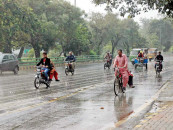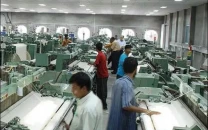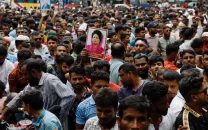Obstetric patients denied maternal care
150 to 200 laboring women visit government teaching hospitals daily, where two to three patients share a bed

Maternity facilities across major teaching hospitals in Lahore have come under severe pressure as a shortage of beds, overcrowding of patients and inadequate availability of equipment and staff instigate an alarming birthing crisis, threatening the lives of countless low-income women and their unborn babies.
Although public hospitals in Lahore like the Lady Willingdon, Lady Aitchison, General Hospital, Mayo, Services, Jinnah, Ganga Ram and Sheikh Zayed Hospital claim to provide maternity services to hundreds of women every day, the pressure of patients is such that two to three women have to share a single bed. The Lady Willingdon Hospital has around 235 beds and three gynaecology units, while Lady Aitchison has about 150 beds.
Kainat, a pregnant patient receiving obstetric treatment at the Ganga Ram Hospital, revealed that there was an endless queue for check-ups outside the OB-GYN department, where staff would often wait for a senior doctor to carry out a simple examination. “The cost of a natural birth at a private hospital is almost Rs150,000, which is unaffordable for us. Even though the government claims that free treatment is available at public hospitals, the reality is quite different,” shared Kainat.
According to sources of the Express Tribune, in a big city like Lahore, 150 to 200 laboring women visit government teaching hospitals daily for childbirth cases. However, due to a lack of facilities, most patients are either referred to other hospitals or are made to deliver on the floor. Unsurprisingly, the maternal mortality rate in Punjab stands at 157 maternal deaths per 1,000 live births, with postpartum hemorrhage reported as a common cause.
Although the Punjab government has announced several projects including a new 1,000-bed hospital, expansion of large wards, integrated reproductive, maternal, neonatal and child health programs, Maryam Nawaz clinics and mobile health units, medical experts have expressed their skepticism over the feasibility of such initiatives.
For instance, Dr Zainab Ali Khan, a gynaecologist, opined that the lack of facilities at the primary and district levels was the main problem, which the government failed to address. “Since maternal facilities are not available in smaller cities, all patients turn to the big hospitals in Lahore. If emergency maternity units were activated in primary health centers, the pressure on hospitals in big cities could be significantly reduced,” explained Dr Khan.
Likewise, Pakistan Medical Association (PMA’s) President Dr Shahid Malik termed the lack of a clear policy of patient referral as a serious problem causing overburdening of facilities. “Due to an improper referral system at the primary, secondary and tertiary levels, patients with minor complications also go directly to big hospitals. Furthermore, existing health facilities are inadequate in proportion to the population, while the available human resources are either insufficient or untrained. Unless district hospitals are set up at the town level and referral lines are activated, the pressure on big hospitals will continue and the facilities will be affected,” warned Dr Malik.
Confirming Dr Malik’s claims, Dr Salman Kazmi, Senior Registrar Medicine at the Mayo Hospital Lahore felt that the rapid increase in population had worsened the shortage of maternal facilities. “Facilities which were built for five patients now have to accommodate 10. If the population is not controlled, no matter how many hospitals are built, they will be inadequate. Yet, increasing beds, recruiting staff, providing modern equipment and ensuring post-natal counseling is essential to bring some improvement,” said Dr Kazmi.












1726134115-0/BeFunk_-(41)1726134115-0-208x130.webp)







COMMENTS (1)
Comments are moderated and generally will be posted if they are on-topic and not abusive.
For more information, please see our Comments FAQ